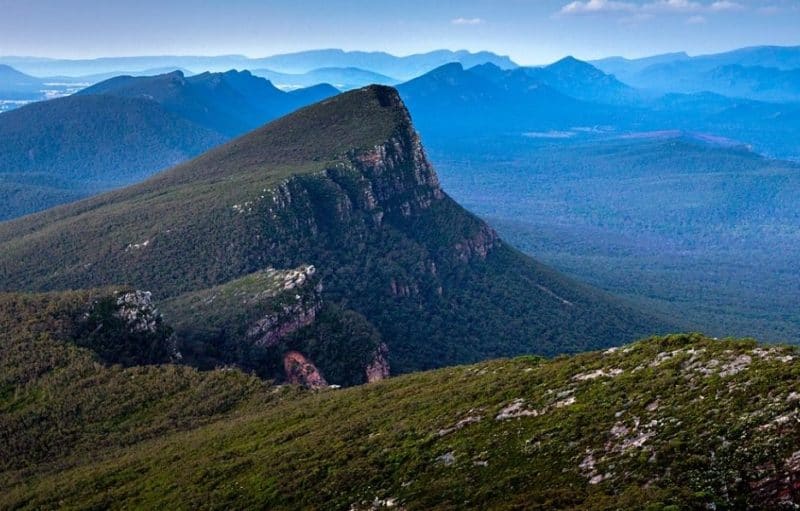MEDIA RELEASE 11 February 2021 |
Powerful owls have been discovered for the first time in decades in the forests of Mount Cole, highlighting the need for the Andrews Government to forge ahead with new national parks in Victoria’s Central West.
Using acoustic recorders, (known as song meters) Victorian National Parks Association citizen scientists discovered a significant population of Australia’s largest owl species, (reaching up to 1.5 metres wingspan), the Powerful Owl in the forests of Mount Cole (45 minutes west of Ballarat).
In what has been the first survey for threatened wildlife in decades in these forests, ecologists who analysed the recordings confirmed that a significant population of Powerful Owls is present in and around planned logging coupe at Mount Cole State Forest.
Calls of other iconic wildlife were also captured, including the Krefft’s Glider (formally Sugar Glider), Southern Boobook Owl, koalas and the Australian Wood Duck. See the full report here.
“This is a significant discovery. The Powerful Owl lost a substantial amount of habitat in the 2019/20 bushfires. With several detections confirmed, Mount Cole appears to be a strong hold for this declining giant of the sky”, said Jordan Crook, spokesperson from the Victorian National Parks Association. The Powerful Owl is listed as threatened under Victoria’s threatened species laws.
“This reaffirms the importance of both protecting these areas in new expert-recommended national parks, and of undertaking further survey work before these critical habitats are irreparably damaged by logging”.
In June 2019, the Victorian Environment Assessment Council (VEAC) recommended a new Mount Buangor National Park for Mount Cole to protect the rich natural and cultural heritage, including significant water catchments.
The new park recommendations include an increase of 58,115 hectares in protected areas across the central west as national park, conservation park, nature reserve, bushland reserve and heritage river – including the Wombat Forest (near Daylesford), Wellsford Forest (near Bendigo), Pyrenees Ranges Forest (near Avoca), and Mount Cole Forest (near Beaufort) as well as many smaller forest areas. An additional 19,728 hectares of regional park to accommodate almost all recreational activities.
“Without permanent protection in a national park, these areas will likely be logged, which could impact the 380 threatened species as well as the headwater of rivers like the Wimmera River and the popular Beeripmo walking track”.
There are 10-14 logging coupes planned or already logged within the Mount Cole area. This number is almost double the amount of coupes set for logging within the new national park – a decision released quietly on Christmas Eve 2019 by Victoria’s state-owned native forest logging company, VicForests.
Logging continues in sensitive native forest habitat while the Andrews government sits on its hands, now 12 months past its legal deadline on making a decision on new central west national parks and conservation reserves. “For parks sake get on with it”.
An opinion poll of 1,009 Melburnians, undertaken in October 2019, showed new parks were popular with nature starved Melburnians with Four in five (81%) Melburnians support the proposals to expand national parks in Victoria around Daylesford, Woodend, Bendigo and Ballarat. See the polling results here. VNPA’s citizen science detection report will be formally submitted to the Victorian Government and the Office of the Conservation Regulator.
Notes:
- The final VEAC report was released on the 21 June 2019 (www.veac.vic.gov.au/investigation/central-west-investigation) after four years of consultation and expert assessment. As required under legislation (The Victorian Environmental Assessment Council Act) The report was tabled in Victorian parliament on 15 August 2019, after which the government has six months to respond to parliament (depending on sitting days), which was due by 20 February 2020, which is now almost 12 months overdue.
- In other survey work, the VNPA has also found the critically endangered Mount Cole Grevillea in logging coupes and state and federally listed Grampians Bitter Pea (www.vnpa.org.au/a-rare-discovery)
